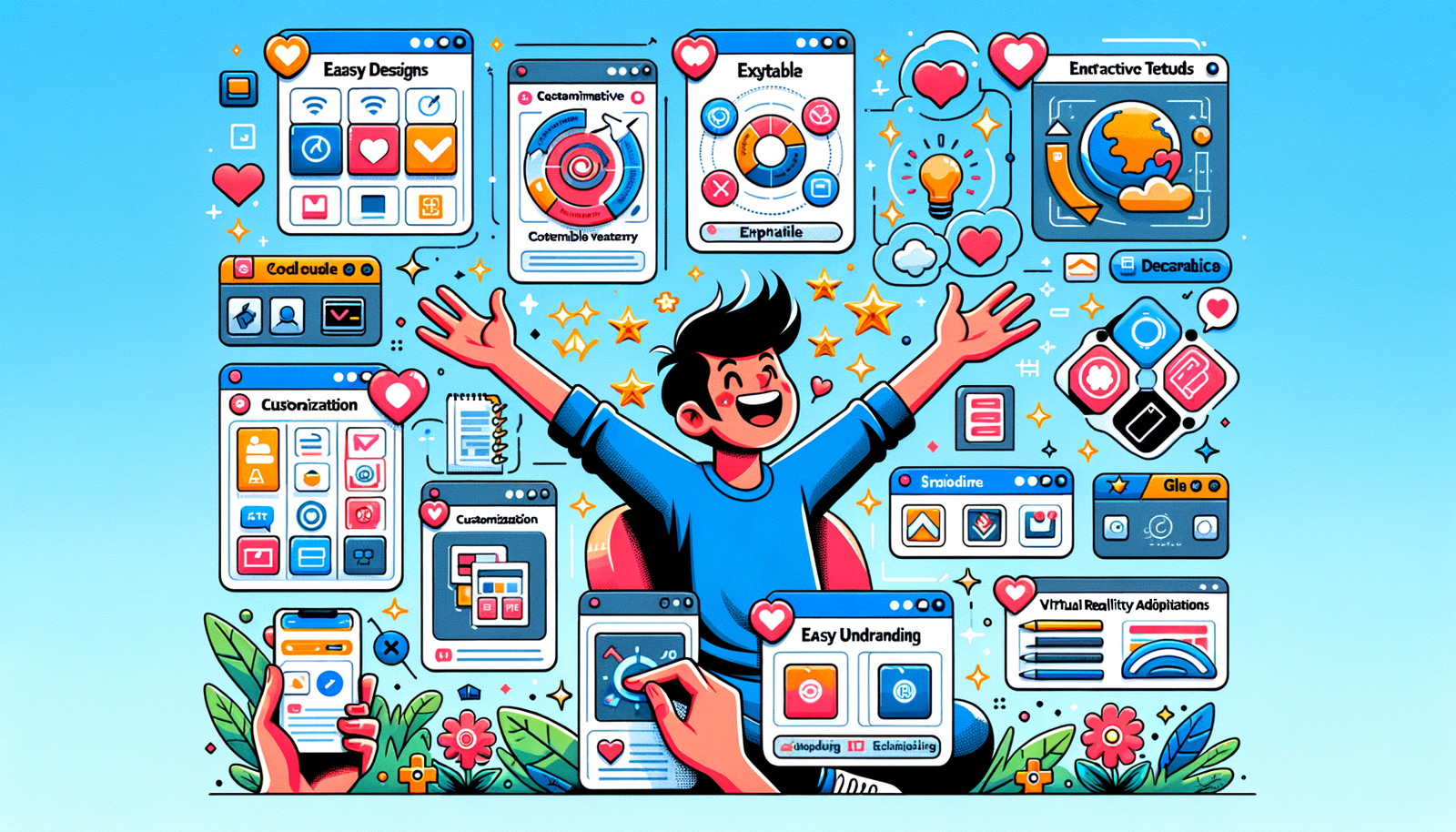Your Cart is Empty
Customer Testimonials
-
"Great customer service. The folks at Novedge were super helpful in navigating a somewhat complicated order including software upgrades and serial numbers in various stages of inactivity. They were friendly and helpful throughout the process.."
Ruben Ruckmark
"Quick & very helpful. We have been using Novedge for years and are very happy with their quick service when we need to make a purchase and excellent support resolving any issues."
Will Woodson
"Scott is the best. He reminds me about subscriptions dates, guides me in the correct direction for updates. He always responds promptly to me. He is literally the reason I continue to work with Novedge and will do so in the future."
Edward Mchugh
"Calvin Lok is “the man”. After my purchase of Sketchup 2021, he called me and provided step-by-step instructions to ease me through difficulties I was having with the setup of my new software."
Mike Borzage
Enhancing User Experience with Customizable Design Software Interfaces: Features, Benefits, and Future Trends
August 23, 2024 3 min read


Understanding Customizable Design Software Interfaces
Definition and Importance
Customizable interfaces in design software refer to the ability of the software to allow users to tailor the interface according to their specific needs and preferences. This feature is essential as it significantly enhances the user experience (UX), enabling users to work more efficiently and comfortably.
In the realm of design software, a well-crafted user experience can make a substantial difference in productivity and user satisfaction. Customizable interfaces ensure that the software can adapt to the diverse requirements of its users, thereby making the design process smoother and more intuitive.
User-Centric Design Principles
The customization of design software interfaces is built on several user-centric design principles. These principles ensure that the interface is not only functional but also intuitive and easy to use. Key principles include:
- Empathy: Understanding the user's needs and challenges.
- Flexibility: Providing various options for customization to cater to different user preferences.
- Simplicity: Ensuring that the customization process is straightforward and does not overwhelm the user.
User personas play a significant role in interface design. By identifying different user types, designers can create interfaces that address the specific needs of each persona, thereby enhancing the overall usability of the software.
Historical Context
The evolution of design software interfaces has been marked by several key milestones. Initially, interfaces were rigid and offered little to no customization. However, as software development progressed, the need for more flexible and user-friendly interfaces became apparent.
Over the years, the incorporation of customizable features has revolutionized design software. Notable milestones include the introduction of customizable toolbars, theming options, and advanced scripting capabilities. These advancements have paved the way for the sophisticated interfaces we see today.
Customization Features and Tools
Interface Customization Options
Modern design software offers a plethora of customization options, allowing users to tailor the interface to their liking. Some of the most common customization options include:
- Layout adjustments: Users can rearrange toolbars, panels, and shortcuts to create a workspace that suits their workflow.
- Theming: Customizing colors, fonts, and icon styles to create a visually appealing interface.
Advanced Customization Tools
Beyond basic customization, advanced tools offer deeper levels of interface personalization. These tools include:
- Scripting and macros: Automation of repetitive tasks through the use of scripts and macros, which can drastically improve efficiency.
- API integrations and plugins: Extending functionality by integrating third-party applications and plugins, allowing for a highly tailored user experience.
Benefits of Customizable Interfaces
Enhanced Productivity
One of the primary benefits of customizable interfaces is enhanced productivity. By allowing users to streamline their workflows and reduce repetitive tasks through **automation**, customizable interfaces enable designers to focus more on creativity and less on administrative tasks.
Improved Accessibility
Custom interfaces can be tailored to meet the needs of users with disabilities, making design software more inclusive. Additionally, interfaces can be adapted for different skill levels, from beginners to experts, ensuring that all users can work effectively regardless of their experience.
User Satisfaction
A personalized environment can significantly increase user engagement and satisfaction. By providing an interface that aligns with individual preferences, users are more likely to feel comfortable and content, which can positively impact their creativity and innovation.
Challenges and Future Trends
Challenges
While customizable interfaces offer numerous benefits, they also present certain challenges. One of the main challenges is balancing complexity with usability. Extensive customization options can sometimes overwhelm users, making the interface difficult to navigate.
Another challenge is ensuring reliability and performance. Extensive customizations can sometimes lead to stability issues, which can negatively impact the user experience.
Security Considerations
API integrations and third-party plugins can introduce security risks. Ensuring that these integrations are secure and do not compromise data privacy is crucial. Additionally, users must be aware of the potential risks associated with using third-party plugins.
Future Trends
The future of customizable design software interfaces is promising, with several exciting trends on the horizon. The role of AI and machine learning in predictive customization is expected to grow, allowing for more intelligent and intuitive interfaces.
Furthermore, the potential of augmented and virtual reality in enhancing user interfaces is immense. These technologies can provide immersive experiences that significantly improve the design process.
Emerging technologies such as voice recognition and gesture control are also poised to play a significant role in interface design, offering new and innovative ways for users to interact with design software.
Also in Design News

Cinema 4D Tip: Connect Objects + Delete for clean, export-ready meshes
December 26, 2025 2 min read
Read More
Revit Tip: Revit Conceptual Mass Workflow: Setup, Parametrics, and Conversion
December 26, 2025 2 min read
Read More
V-Ray Tip: Light Linking Best Practices for V-Ray for SketchUp
December 26, 2025 2 min read
Read MoreSubscribe
Sign up to get the latest on sales, new releases and more …


